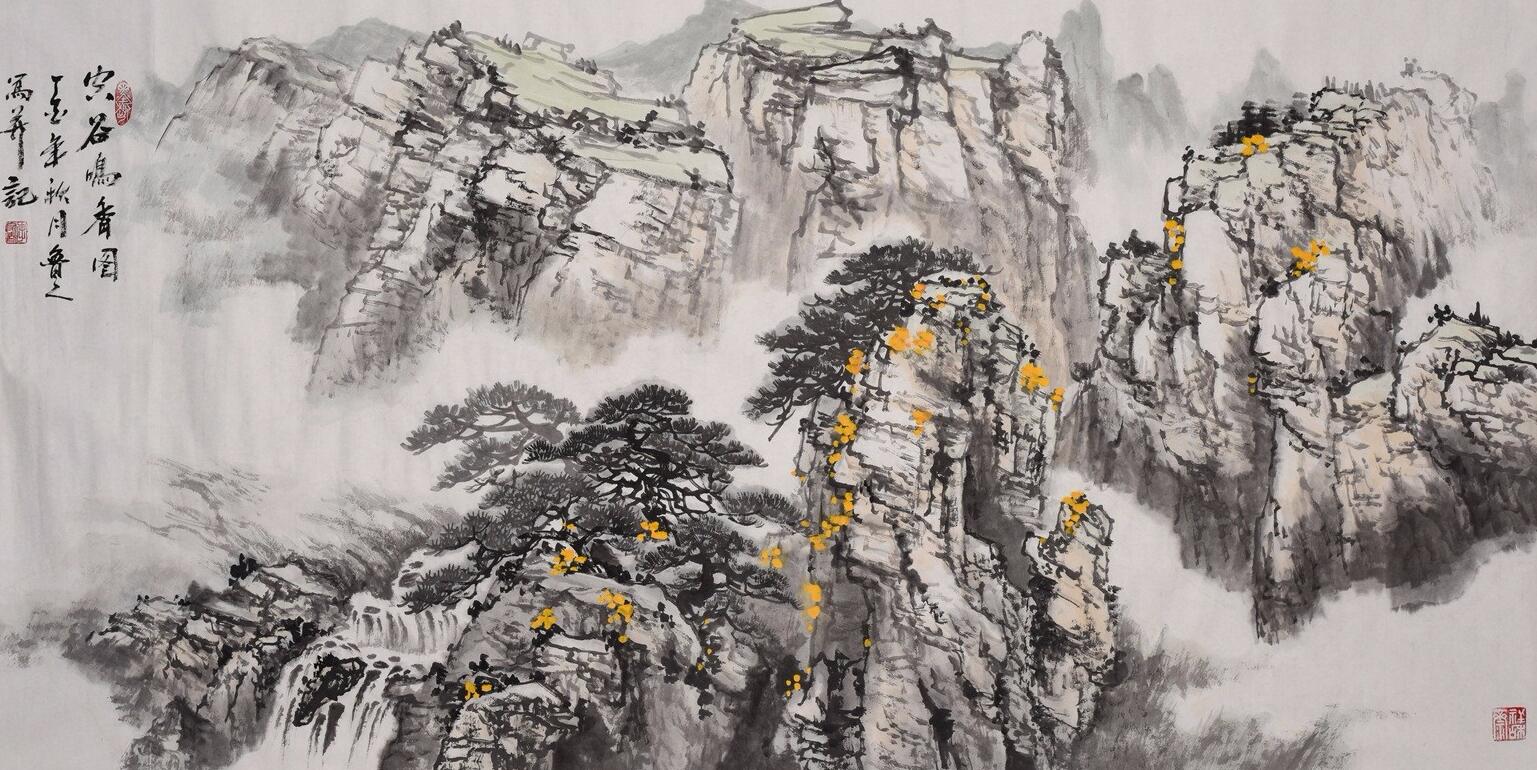潍坊河湖文化书画摄影优秀作品展开展
大家好,如何看待中国古建筑「中国式建筑」很多人还不知道,现在让我们一起来看看吧!
本期编辑/上海雅舍辛乙堂
Yashe Studio
———————————
从古至今,建筑都能体现每个时代与众不同的风格和特点,明清作为我国建筑史上的最后一个高峰,自然也是有着非同寻常的艺术审美的,也为我们留下了很多直接模仿、借鉴的建筑艺术。
From ancient times to the present, architecture can reflect the distinctive style and characteristics of each era. As the last peak in the history of architecture in China, the Ming and Qing Dynasties also had an unusual artistic aesthetic, and left us a lot of directly imitated and borrowed architectural art.
建筑一直都是人们生活中的重要组成部分,除了吃穿出行,最重要的就是在家居住的环境,建筑就承担着这样的职责。
Buildings have always been an important part of people's lives. In addition to food, clothing and travel, the most important thing is to live at home. Buildings bear such responsibilities.
建筑从最早为了给人们遮风挡雨的藏身之地逐渐演变为了对艺术的追求。人们对建筑的要求也逐渐从安稳、牢固转变成了建筑能给自己带来怎样的观赏价值和艺术熏陶。
From the earliest hiding place to shelter people from wind and rain, architecture gradually evolved into the pursuit of art. People's requirements for architecture have gradually changed from stability and firmness to what kind of ornamental value and artistic influence architecture can bring to themselves.
建筑体现了时代的特点,也体现了不同人的不同审美风格。明朝的建筑就将使用价值与观赏价值融合在一起,体现出明朝人独特的审美风格,也能感受到他们在设计建筑时背后蕴含的思想文化。
The architecture reflects the characteristics of the times and the different aesthetic styles of different people. The architecture of the Ming Dynasty combined the use value with the ornamental value, reflecting the unique aesthetic style of the people of the Ming Dynasty, as well as the thought and culture behind their architectural design.
不过建筑往往受到地理位置、气候条件以及当地习俗的影响而有所区别,呈现出了风格迥异的面貌。
However, due to the influence of geographical location, climate conditions and local customs, the buildings are often different, showing different styles.
明朝的建筑也受到了政治制度、经济发展、思想文化的特点而有所不同,体现了明朝政治环境下建筑的时代性。
The architecture of the Ming Dynasty was also different due to the characteristics of political system, economic development, ideology and culture, which reflected the modernity of architecture in the political environment of the Ming Dynasty.
一、反映政治环境
1、等级制度森严
明朝的建筑并不是人们根据喜好随心所欲建成的,而是需要适应当时的社会背景以及政策规定来建成的。朱元璋在夺取政权建立明朝之后。
The buildings of the Ming Dynasty were not built according to people's preferences, but were built to adapt to the social background and policies at that time. After Zhu Yuanzhang seized power and established the Ming Dynasty.
为了维护对庞大疆域的统治,对社会中的方方面面都做出了详细的规定,关于建筑也是制定了严格的制度。要求人们必须按照规定来建造房屋住宅,不得违反政策要求。
In order to maintain the rule over the huge territory, detailed regulations have been made on all aspects of society, and strict regulations have been formulated on architecture. It is required that people must build houses and residences in accordance with regulations and not violate policy requirements.
不同身份不同阶级的人建造房屋的规格不同,从颜色、装饰、建筑材料的选择多方面进行区别。统治者此举是让百姓对身份有明确的上下级认知。
People of different status and different classes have different specifications for building houses, which are different from the choice of color, decoration and building materials. The ruler's action is to let the people have a clear understanding of their identity.
2、风格变化
明朝初期刚刚建立了建筑等级制度,当时的建筑还呈现出简单朴素的特点。到了明朝中后期,由于当时社会风气逐渐奢靡,所以建筑的风格也渐渐失去了局限性,呈现出壮阔艳丽之感。
At the beginning of the Ming Dynasty, the architectural hierarchy was just established, and the architecture at that time also showed the characteristics of simplicity and simplicity. In the middle and late Ming Dynasty, due to the extravagant social atmosphere, the architectural style gradually lost its limitations and presented a magnificent and gorgeous feeling.
即使是寻常百姓,只要有足够的钱财也可以修建富丽堂皇的建筑。所以明朝中后期的建筑逐渐失去了划分百姓等级的作用,而是崇尚奢靡,建筑可以根据自己的喜好进行修缮。
Even ordinary people can build magnificent buildings as long as they have enough money. Therefore, the buildings in the middle and late Ming Dynasty gradually lost the role of piding the rank of the common people. Instead, they advocated extravagance and could be repaired according to their own preferences.
3、风水很重要
古时候修建住宅往往要讲究风水,会先请风水学家观察一番再决定是否在此地修建。明朝的建筑与风水密不可分,许多人认为选择一个风水好的地点居住不仅能让自己和家人幸福平安,还能隐蔽子孙,保佑后代子孙事业有成。
In ancient times, people always paid attention to geomantic omen when building houses. They would ask a geomantic expert to observe it before deciding whether to build houses here. The architecture of the Ming Dynasty is inseparable from geomantic omen.
除此之外,许多人认为风水与科举考试有关,风水的好坏甚至可以直接影响科举考试顺利与否。所以明朝人在看过风水以后,会花费重金修缮房屋,以求生活顺遂。
In addition, many people believe that feng shui is related to the imperial examination. The quality of feng shui can even directly affect the success of the imperial examination. So people in the Ming Dynasty spent a lot of money to repair their houses after they saw Feng Shui, in order to make life easier.
二、凸显独特审美
1、家具多样
明朝人除了对建筑外部有讲究,建筑内部的装饰更是用尽了心思。明朝的手工业比较发达,商业得到发展,所以他们有种类繁多的家具、装饰可以挑选,甚至出现了许多西洋灯具。
In addition to paying attention to the exterior of the building, people in the Ming Dynasty exhausted their mind on the interior decoration of the building. The handicraft industry in the Ming Dynasty was relatively developed and the commerce was developed, so they had a wide range of furniture and decorations to choose from, and even many western lamps and lanterns appeared.
除此之外,明朝人还会饲养宠物增加生活情趣,不仅用来打发时间排解心情,还可以让动物去博弈。无论是何种身份和地位的人,饲养动物都成了比较寻常的事情。
In addition, people in the Ming Dynasty also kept pets to increase the interest of life, not only to pass the time to relieve their feelings, but also to let animals play games. No matter what status and status of people, raising animals has become a relatively common thing.
2、传递时代气息
明朝社会建筑的风格大不相同,但是都体现了百姓对生活的热爱以及情趣,还蕴含了明代建筑的三个特点。
The styles of social architecture in the Ming Dynasty are quite different, but they all reflect the people's love and interest in life, and also contain three characteristics of the architecture in the Ming Dynasty.
首先是艺术性,明朝的建筑沿袭了唐宋时期的审美,结合了全国各地的工艺,呈现出了不同的审美。
The first is artistry. The architecture of the Ming Dynasty followed the aesthetics of the Tang and Song Dynasties, combined with the crafts of all parts of the country, and presented different aesthetics.
也表达了明朝不同人对待建筑的品味不同。人们对艺术的追求从未停歇,所以才会从明初的简朴无趣转变为后来的富丽堂皇多姿多彩,使得明朝的建筑成为了中国历史建筑的代表。
It also shows that different people in the Ming Dynasty had different tastes in architecture. People's pursuit of art has never stopped, so it changed from the simple and boring in the early Ming Dynasty to the magnificent and colorful later, making the architecture of the Ming Dynasty the representative of Chinese historical architecture.
其次是伦理性,明朝社会具有强大的制约性,强调儒家思想的重要性,所以对建筑的色彩、房屋数量做出了明确规定。
Secondly, it is ethical. The Ming Dynasty society has strong constraints, emphasizing the importance of Confucianism, so it has made clear provisions on the color of buildings and the number of houses.
而明朝初期百姓根据规定建造的房屋也体现出受到政治影响的建筑风格不同,伦理等级制度为建筑的风格做出区别。
The houses built by the people according to the regulations in the early Ming Dynasty also reflected the different architectural styles influenced by politics, and the ethical hierarchy made differences for architectural styles.
再就是智慧性,明朝的建筑体现出百姓的自然观,风格设定、家具选择也彰显出文化底蕴,与哲学结合在一起,体现出百姓希望与社会、与自然和谐相处的愿望。建筑上雕刻的动物、花朵也展现出人们对自然的敬畏之心。
Then there is the wisdom. The architecture of the Ming Dynasty reflects the people's view of nature. The style setting and furniture selection also reveal the cultural heritage. Together with philosophy, it reflects the people's desire to live in harmony with society and nature. The animals and flowers carved on the buildings also show people's awe of nature.
明朝统治者十分重视伦理纲常,一开始制定严格的制度约束人们的行为,还要求建筑根据等级进行划分。到了中后期,明朝社会逐步发展,人们崇尚奢华的生活,之前关于建筑的规定逐渐受到摒弃。
The rulers of the Ming Dynasty attached great importance to ethics. At the beginning, they formulated a strict system to restrict people's behavior, and required buildings to be classified according to their grades. In the middle and late Ming Dynasty, with the gradual development of society, people advocated luxurious life...
人们开始根据自己的喜好以及追求建造房屋,体现出明朝社会百姓思想观念的转变。建筑也反映了明朝社会的真实面貌,其中一砖一瓦都能体现出当时流行的艺术风格,以及人们所信仰的文化。
People began to build houses according to their own preferences and pursuits, which reflected the change of people's ideas in the Ming Dynasty. The architecture also reflects the real face of the Ming society, in which each brick and tile can reflect the popular artistic style and the culture that people believe in.
我们了解了建筑背后蕴藏的历史,就会对传统文化更加敬服,也能将我国优秀的传统文化发扬下去。
When we understand the history behind architecture, we will be more respectful of traditional culture and carry forward our excellent traditional culture.










